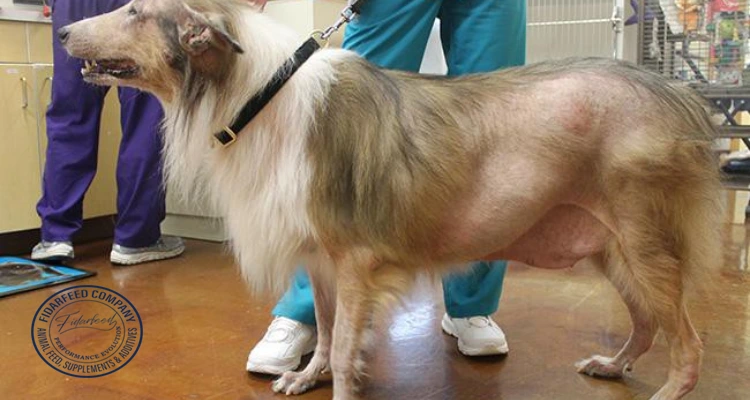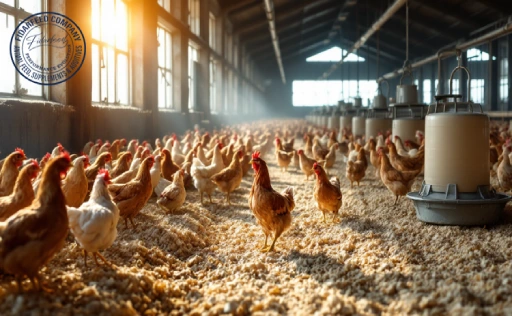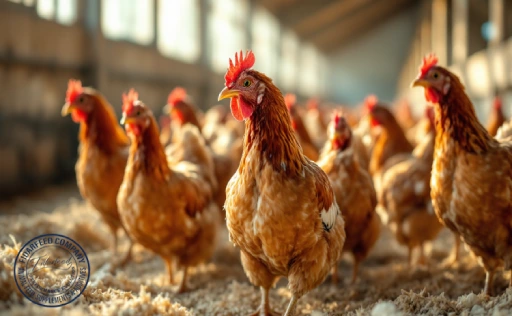Why Skin Problems and Hair Loss in Dogs Deserve Immediate Attention
Skin problems and hair loss in dogs might seem like minor inconveniences at first, but they often signal deeper issues that can severely impact a dog’s health and well-being. For dog breeders, especially those involved in commercial breeding or show preparation, even small issues like flaky skin or fur patches can affect performance, appearance, and ultimately, market value. More importantly, untreated skin issues can cause chronic discomfort, infections, or long-term complications. In this article, we’ll unpack the real causes of skin problems and hair loss in dogs, explain the symptoms you should never ignore, and offer solutions that work in real-life breeding settings. Keep reading—it could save your dogs from unnecessary suffering and save you from costly treatments.
Spotting the Early Signs: How to Identify Skin Problems and Hair Loss in Dogs
The earlier you spot skin problems and hair loss in dogs, the easier it is to manage or reverse them. Be on the lookout for signs like excessive scratching, licking, or biting of specific areas. Red or flaky patches, bald spots, dandruff, and a dull coat are all indicators that something’s not right.
Learn more about: Synbiotic Supplement for Dogs and Cats
Behavioral changes like irritability or restlessness can also stem from constant itchiness or discomfort. Pay attention during grooming sessions—that’s often when breeders notice the first clues.

Common Causes of Skin Problems and Hair Loss in Dogs You Should Know
Understanding what causes these problems helps breeders take targeted action. Common culprits include:
-
Fleas, mites, and other parasites
-
Food allergies or sensitivities
-
Bacterial or fungal infections
-
Environmental allergens like pollen or dust
Learn more about: Why is My Dog Stressed? Common Causes of Stress in Dogs
-
Hormonal imbalances, like hypothyroidism
-
Nutritional deficiencies
-
Chronic stress or anxiety
Knowing the root cause is the first step toward effective treatment and prevention.
Allergies and Sensitivities: A Leading Trigger of Dog Hair Loss and Skin Irritation
Allergies are one of the top reasons dogs lose fur or develop skin issues. Food-based allergies to proteins like beef, chicken, or grains can lead to recurring skin infections.
Learn more about: Best Dog Foods for Small Breeds: Pomeranian Breeder Edition
Environmental triggers like mold, dust mites, or seasonal pollen can cause inflammation, itchiness, and rashes. Some dogs are even allergic to flea saliva, meaning just one bite can cause severe reactions. Allergy testing and dietary trials are valuable tools in diagnosing these hidden triggers.
Fungal and Bacterial Infections: How They Impact Your Dog’s Skin and Coat
Conditions like ringworm (a fungal infection despite the name) or hot spots (bacterial infections) can cause rapid fur loss and painful sores. Ringworm typically presents as circular, scaly bald patches, while hot spots are red, moist, and often pus-filled.
Learn more about: The Ultimate Guide to Skin Diseases in Dogs: Symptoms, Treatment, and Prevention
Both conditions can spread quickly, especially in kennel environments. Prompt cleaning, topical treatments, and vet-prescribed medications are essential for quick recovery.
Parasites Like Fleas and Mites: Tiny Invaders, Big Problems
Even a mild flea infestation can cause relentless scratching and hair loss. Worse still, mange mites like Sarcoptes or Demodex burrow into the skin and trigger severe irritation and secondary infections.
Learn more about: Why Your Dog Has Severe Diarrhea and How to Cure It
These parasites are not only uncomfortable for the dog but can also spread rapidly across your entire kennel if left untreated. Regular deworming, grooming, and parasite control are non-negotiable for every responsible breeder.
The Role of Diet and Nutrition in Preventing Skin Problems in Dogs
Nutrition plays a vital role in skin and coat health. A poor-quality diet lacking essential fatty acids, vitamins (like A and E), or minerals (like zinc) can manifest as flaky skin, brittle hair, and excessive shedding.
Learn more about: Best Probiotic for Small Dogs: A Complete Guide
Consider feeding high-quality commercial feeds or consulting a veterinary nutritionist to design a balanced diet for your breed. Omega-3 and Omega-6 supplements have been scientifically shown to improve coat shine and reduce inflammation.
Stress and Hormonal Imbalance: Overlooked Causes of Dog Hair Loss
Stress isn’t just an emotional problem—it’s a physiological one too. Dogs under chronic stress may develop psychogenic alopecia, a condition where they compulsively lick or bite their fur.
Learn more about: Why Your Dog Has Severe Diarrhea and How to Cure It
Hormonal imbalances such as Cushing’s disease or hypothyroidism can also cause symmetrical hair thinning, weight changes, and lethargy. If your dog’s symptoms don’t respond to dietary or external treatments, it’s time to consider these internal causes.
Effective At-Home Remedies and Care Tips for Skin Problems in Dogs
Some mild cases can be managed at home. Use medicated shampoos formulated for dogs with sensitive skin. Applying coconut oil or aloe vera (vet-approved products only) can help soothe irritated areas.
Learn more about: Probiotic Supplements
Ensure your dog’s living area is clean, dry, and free of allergens. Regular brushing helps stimulate oil production and spreads it across the coat, keeping it shiny and healthy. But always remember—what works for one dog may not work for another. Monitor results and adjust accordingly.
When to See a Vet for Skin Problems and Hair Loss in Dogs
If the issue persists for more than a week, worsens despite home treatment, or is accompanied by lethargy, open wounds, or other systemic symptoms—see your vet.
Professional diagnosis may include skin scrapings, blood work, allergy testing, or hormone panels. Timely vet intervention can prevent complications and stop a minor issue from turning into a major one.
Conclusion: Stay Vigilant, Act Early, and Keep Your Dogs Healthy and Happy
Skin problems and hair loss in dogs aren’t just cosmetic—they’re a window into the dog’s overall health. By paying close attention, maintaining good hygiene, offering proper nutrition, and acting quickly when symptoms appear, you can protect your dogs from discomfort and avoid long-term issues. Whether you’re breeding show dogs or companions, proactive care is key to raising vibrant, healthy animals. If you’ve faced skin issues in your dogs before, share your experience in the comments—or drop a question and let’s find solutions together.








